|
|
|
Editor's note
|
|
Bushfires raged across NSW and Queensland this week, prompting a 'Catastrophic' fire rating for Sydney for the first time. What is especially unusual is how early these fires have come, confirming fears fire seasons are getting longer.
Long-term drought has meant many natural fire breaks – rainforests, gullies and wetlands – have literally evaporated. Some may argue this is no time to discuss climate change, but we disagree. So does Janet Stanley, principal research scientist at the Melbourne Sustainable Society Institute, who lost her house to a bushfire.
As summer is yet to even begin, we’re certain to see more fires. Even if you live in a traditionally safe area it’s a good idea to talk to your family, make an evacuation plan (including the pets) and prepare your home.
Please stay safe. And stay tuned for more coverage of our environment, climate change, and the science behind natural disasters.
|
Madeleine De Gabriele
Deputy Editor: Energy + Environment
|

|
|
|
|

Residents evacuate themselves and their animals to a park in Old Bar, NSW, Saturday, November 9, 2019.
AAP Image/Darren Pateman
Ashleigh Best, University of Melbourne
During an emergency it's vital you know what your animals need, where you can take them and what your local rules are. Fortunately, there are plans in place and guidelines to help.
|
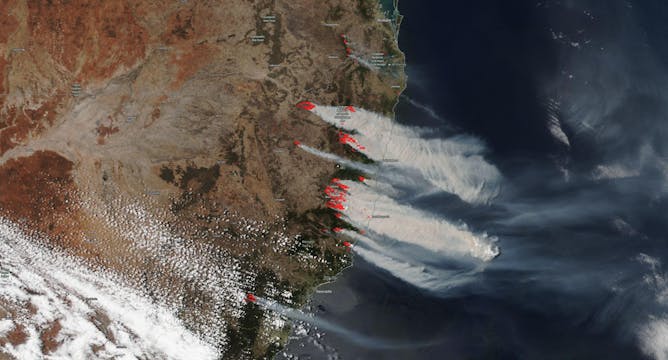
Multiple large, intense fires are stretching from Australia’s coast to the tablelands and parts of the interior.
AAP Image/Supplied, JPSS
Ross Bradstock, University of Wollongong; Rachael Helene Nolan, Western Sydney University
They escaped to the coast for the quiet life, but now sea-changers are in the path of monster fires.
|
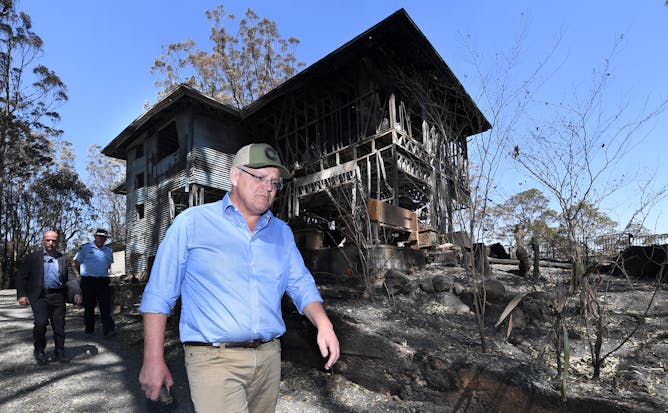
Prime Minister Scott Morrison inspecting a burnt-out property in the Gold Coast hinterland in September 2019. Mr Morrison has offered “thoughts and prayers” to those affected by the fires.
Dave Hunt/AAP
Janet Stanley, University of Melbourne
Fire officials warn that this week's catastrophic fire conditions are "where people die". Climate change has arrived, and politicians should drop the meaningless rhetoric.
|
Stay safe
|
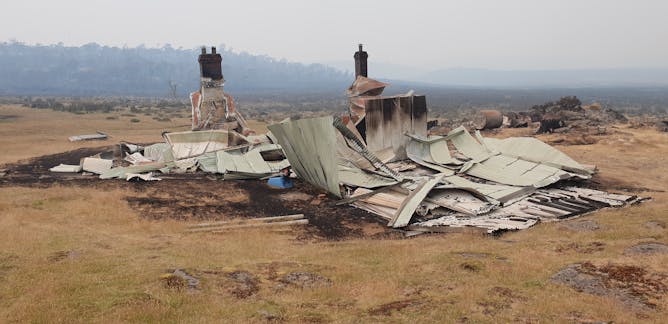
Douglas Brown, Western Sydney University
If you're preparing to defend your home from fire, be aware of the vulnerable parts of your house.
| |

Douglas Brown, University of Sydney
Leaving early is the best response to a bushfire, but it's not always possible. Every house is different, but there are some general guidelines for finding the safest spots to shelter in your home.
|
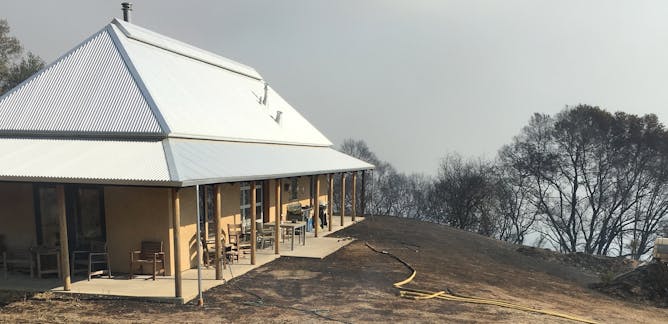
Douglas Brown, Western Sydney University
Houses built more than 20 years ago are likely to be more vulnerable to bushfires than newer builds. But there are some simple and inexpensive ways to reduce your risk.
| |
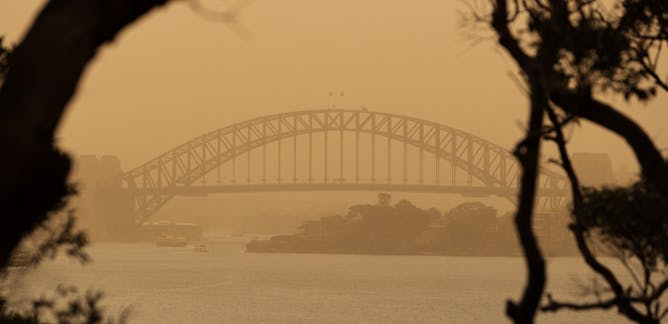
Brian Oliver, University of Technology Sydney
Smoke from the bushfires has impacted air quality in affected and surrounding areas. To minimise any health risks, people with pre-existing medical conditions should take extra care.
|
|
|
Fires and tech
|
-
David Tuffley, Griffith University
The convergence of technologies such as 5G, artificial intelligence and virtual reality may offer hope for the way we manage future bushfire disasters.
-
Stanley Shanapinda, La Trobe University
Service outages, network congestion and infrastructure at risk of being destroyed by fire are some of the issues worsening an already devastating situation.
|
|
Let's talk about the c-word
|
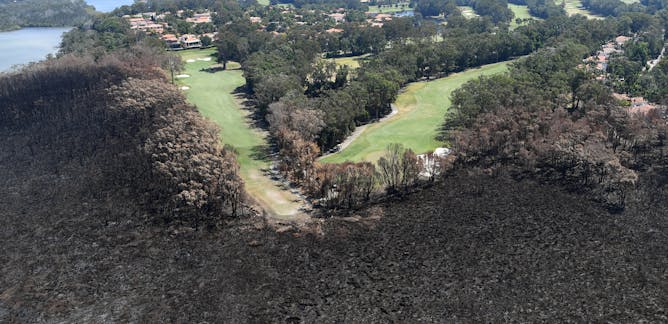
Dale Dominey-Howes, University of Sydney
Climate change makes every risk factor for major bushfires worse, which means massive, intense fires will only become more likely.
| |
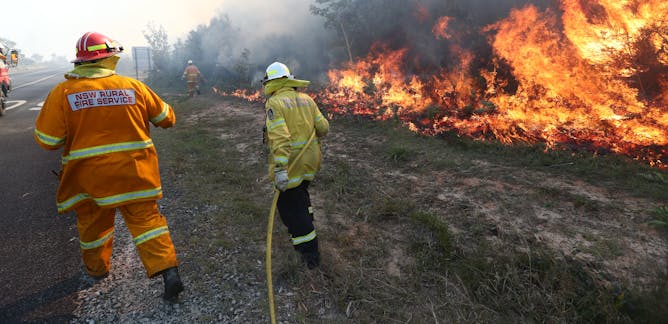
Chris Lucas, Australian Bureau of Meteorology; Sarah Harris
Bureau of Meteorology researchers painstakingly analysed more than 40 years of data to work out exactly what is causing Australia's spring bushfire phenomenon.
|
|
|
For young ones
|
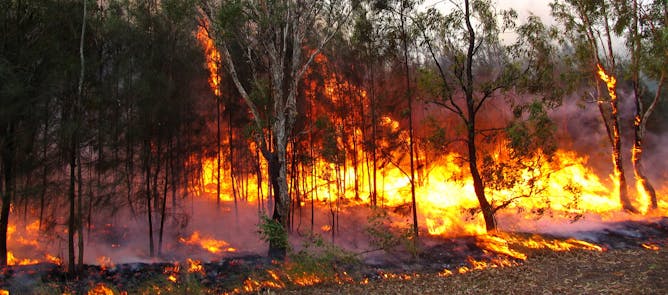
The more fuel there is for the fire to burn, the bigger the fire. Leaves, trees and grass fuel the fire.
Flickr/bertknot
David Bowman, University of Tasmania
Bushfires require three key ingredients to ignite: heat, fuel and oxygen.
|
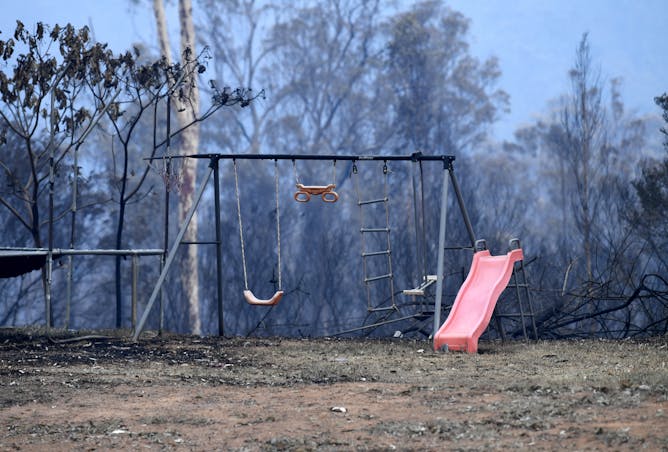
Up to 45% of children can experience depression after a natural disaster.
Dan Peled/AAP
Toni Noble, Australian Catholic University
Most kids bounce back quickly after a disaster and there are several strategies you can use to help.
|
| |
Featured jobs
|

|
University of Melbourne — Parkville, Victoria
|

|
La Trobe University — Bundoora, Victoria
|

|
Monash University — Caulfield, Victoria
|

|
Deakin University — Waurn Ponds, Victoria
|
|
|
|
| |
| |
| |

|
| |
| |
| |
Featured events
|

|
B117, Melbourne School of Design, Basement Level, Glyn Davis Building, The University of Melbourne, Parkville , Victoria, 3052, Australia — The Conversation
|

|
In store at Avid Reader Bookshop, 193 Boundary St, West End , Queensland, 4101, Australia — The Conversation
|

|
Leighton Hall, John Niland Scientia Building, UNSW , Sydney, New South Wales, 2052, Australia — UNSW
|

|
SSB Lecture Theatre 200, Social Sciences Building, Science Road, University of Sydney, Sydney , New South Wales, 2006, Australia — University of Sydney
|
|
|
|
| |
| |
| |
| |
| |
|
|
|
|
|
|
|